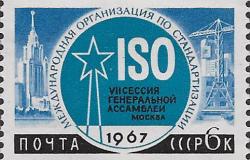
Scholars of international relations and public policy recognize that quasi‐private actors supply governance services alongside governmental actors. We explore how membership in the dominant trade regime, the General Agreement on Tariffs and Trade/the World Trade Organization (GATT/WTO) influences countries’ incentives to join the quasi‐private regime, International Organization for Standardization (ISO). Both global regimes seek to remove trade barriers; the former focuses on tariff and non‐tariff obstacles, and the latter on technical barriers. While any firm can subscribe to over 18,000 ISO standards, only national standards bodies, one per country, can become ISO members. We posit that given the substantial political costs of joining GATT/WTO and the relatively low entry barriers to joining the ISO, high trading countries might view the ISO as a (partial) functional equivalent of the GATT/WTO. Our empirical analysis of ISO membership dynamics over the period 1951–2005 lends support to our argument.
Policy Implications
-
When faced with barriers to entry at the dominant trade regime, exporting firms and their governments may consider participating in private regimes to influence the trade environment.
-
As evidenced in the debates over the reform of UN Security Council and the emergence of the Asian Infrastructure Investment Bank (AIIB), the institutional architecture and the rule‐making powers of global regimes should reflect the power configurations of the 21st century, and not of the post‐World War II order.
-
Creating private regimes in a policy area requires factoring in potential participants’ positions with regard to the existing intergovernmental regimes.
-
While existing intergovernmental regimes are the key pillars of global governance, their rule‐making systems privilege certain perspectives over others. Private regimes can foster polycentricity and bridge democracy deficits by allowing multiple stakeholders to create regimes with different rule structures.